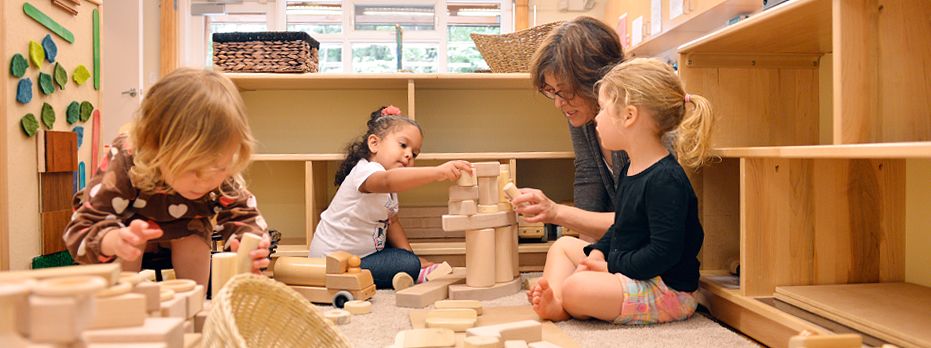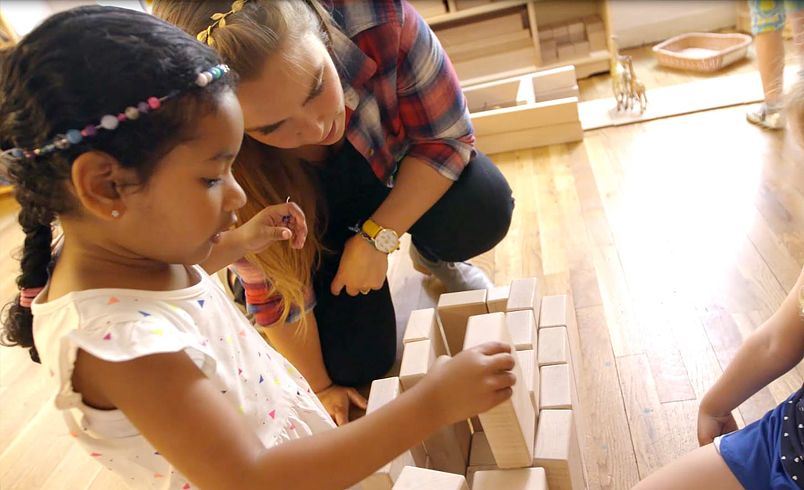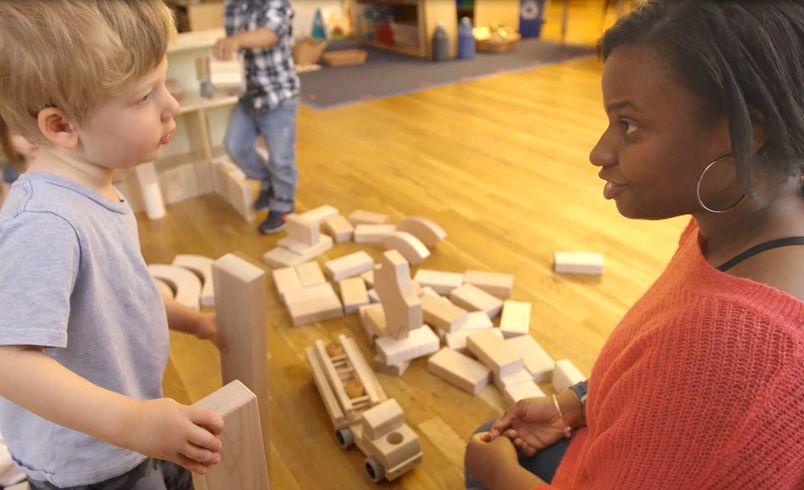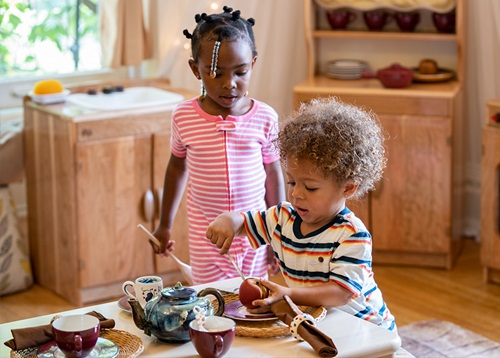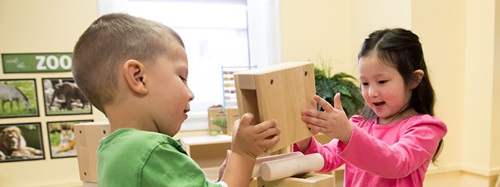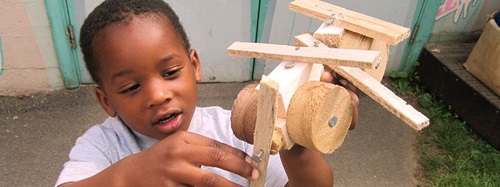Guiding Children's Learning During Block Play
| October 2018As an author of a book on block play, it was an obvious choice. For his first Christmas, I gave my grandson, Dagan, a set of wooden unit blocks. Dagan is fortunate to have parents who get on the floor with him while he plays with blocks. He also attends a child care center that encourages block play. When Dagan was nearly 18 months old, my daughter sent a video of him and his dad building with blocks. My first reaction was that my grandson was a mini-genius block builder! I couldn’t get over how carefully he stacked each block despite the fact that his little 18-month-old body just wasn’t yet able to keep from knocking down the blocks he had just so carefully placed.
After watching the video more than a dozen times, I realized that every child can be a “genius builder” if they are guided by a caring adult. The growing research on teacher-child interactions shows that adults hold a key role in supporting children’s learning during play. Here are a few simple things you can do to guide children during block play:
Provide time for open ended exploration with blocks
In addition to wooden unit blocks, my grandson has access to interlocking blocks and other construction materials on a daily basis, both at home and at his child care center. He is allowed plenty of time to get to know the different types of blocks and materials. As Dagan manipulates these different materials he is improving his spatial awareness and hand-eye coordination and exploring what the materials can do. His parents and teachers model appropriate guidelines for building (Tunks 2013), such as blocks are for building (not throwing) and unbuild your own construction only (no knocking down structures that aren’t yours). If a toddler can learn these rules, there is no reason to believe preschoolers and kindergartners can’t also learn to constructively play with blocks.
Observe and document children’s building
What are the children building? What problems are they encountering? What interests do the children express during building? What are the children learning about the properties of blocks as they build? These are all important things to notice as you observe children in the block area. Even though my grandson did not yet have the language to express his understanding of the importance of careful placement of blocks in order to stack the blocks as high as he possibly could, he was able to demonstrate that by trying over and over again, he could be successful at building a tall tower. His observant father played an essential role in sitting on the floor during this process and modeling a way to carefully steady the blocks once placed. Dagan’s teachers at his child care center photograph the children as they build and send home daily newsletters to parents with the photos, describing what children are learning.
Respond with thoughtful feedback
In watching the video, I had to chuckle when I listened to the dialogue between my daughter and her husband and son. Dagan's father was explaining to his son that the cylinder he held in his hand would fall off the small triangle standing with the point up. If he would lay the triangle flat, he could add another block on top of it. My daughter inserted that Dagan should be allowed to try it and if it fell, “well, then, he’ll learn.” I hear from so many teachers how challenging it is to be involved just enough in children’s block play to support complex thinking or language without taking over or interfering with play. This is truly a skill that takes time to master! Start with these tips:
- Ask open-ended questions. As his dad sat on the floor observing Dagan build, he would ask “What else do you want to put on top?” This suggests to the child that the play is not done yet and can be expanded. For older children, you might ask, “What are some other ways to keep the tower from falling down?” or “What do you think would happen if we took this block out to make a doorway?” (See Chapter 2, Block Area, in Strasser and Bresson 2017).
- Describe and expand on what children say. Just being present while children are playing with blocks and responding appreciatively to their efforts will show children that you value their building (Hansel 2017). When Dagan squealed “whoa!” with pleasure at the successful placement of a block, his dad echoed his response. With other successful placements, dad would respond with “There you go. Very nice.” and “Awesome.” Sometimes all that is needed is to describe what the child has built. “You balanced on your tippy toes so that you could reach up high to place that last block on top without knocking the whole tower over!”
- Support language and vocabulary. In another video, my daughter told Dagan he was putting an object “inside” an enclosure. Directional language that is so important in spatial skill development such as “behind”, “in front of”, and “under”, can be learned in context during block play. When children are deeply engaged in their play, they are highly motivated to communicate and try out new words.
- Point out building elements, concepts and new terms. Providing children with the appropriate term at the moment when they connect it to an action makes the learning more meaningful. (Hansel 2017). For young Dagan, it might mean learning the names and shapes of the blocks or learning to count the number of the blocks at the same time that he is enjoying the process of stacking blocks. For older children involved in a study of buildings, it might include architectural terms like “arches”, “columns”, “dome”, and “skyscraper” or exploring the concepts of balance and gravity. Block play offers children the opportunity to learn many important concepts and terms related to social studies, math, science, engineering, architecture, and construction.
One final suggestion . . . don’t worry so much about following these steps to create mini-geniuses. Have fun! Get down on the floor with your child or children and use these tips as a way to encourage a love of learning through block play!
References
Hansel, Rosanne. 2017. Creative Block Play: A Comprehensive Guide to Learning through Building. St. Paul, MN: Redleaf Press.
Strasser, Janis and Lisa Mufson Bresson. 2017. Big Questions for Young Minds: Extending Children’s Thinking. Washington, DC: National Association for the Education of Young Children.
Tunks, Karyn W. 2013. “Happy 100th Birthday Unit Blocks!” Young Children 68(5): 82-87.

